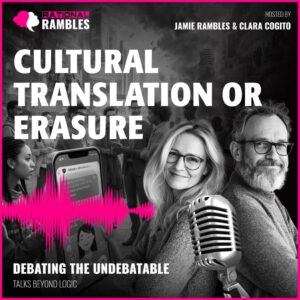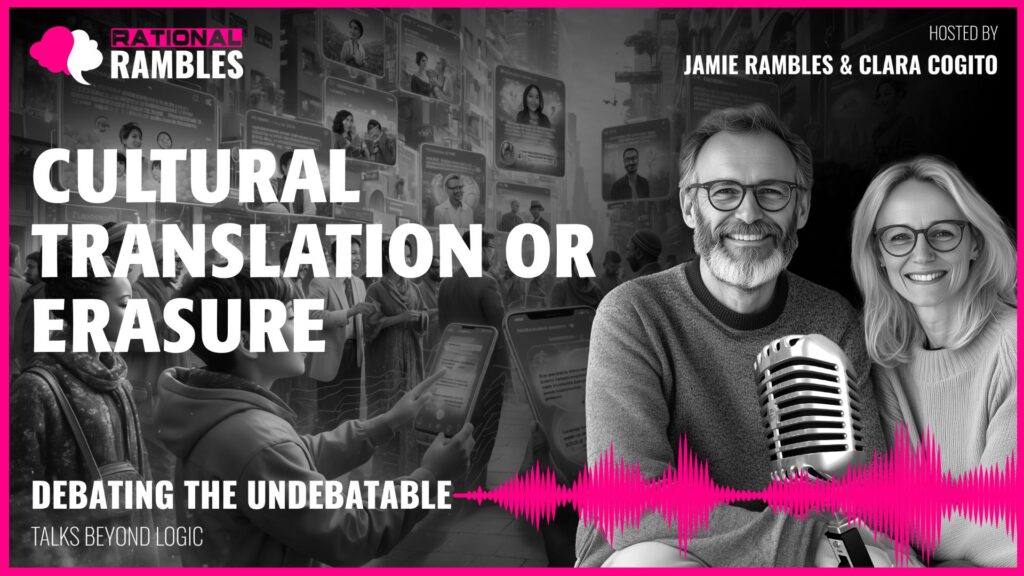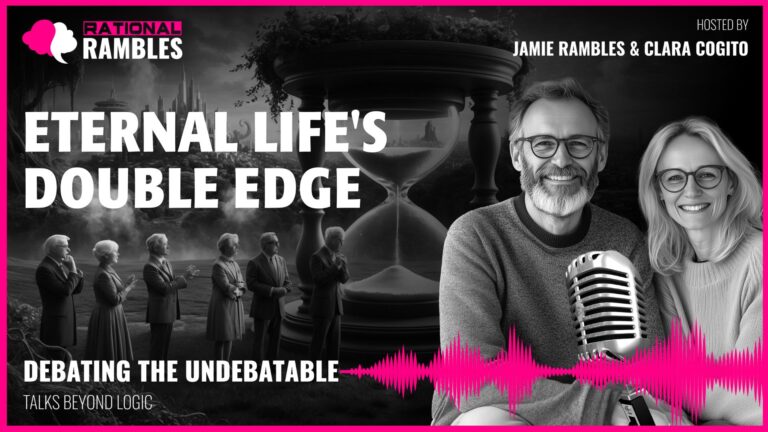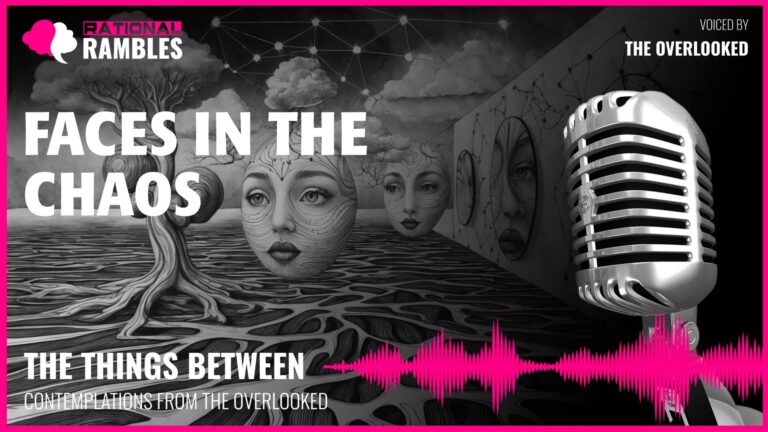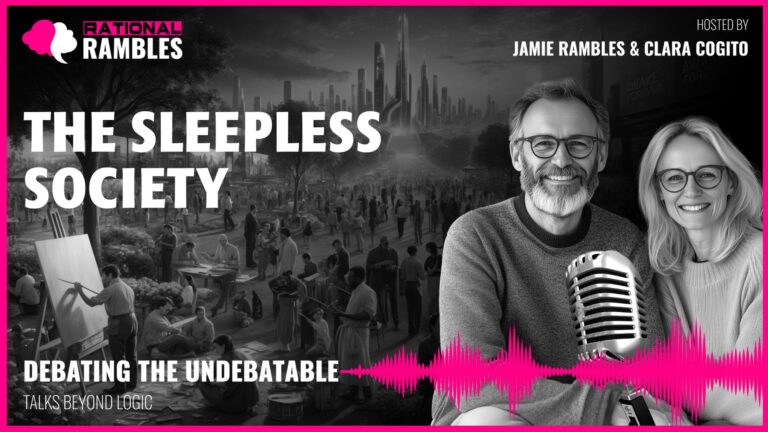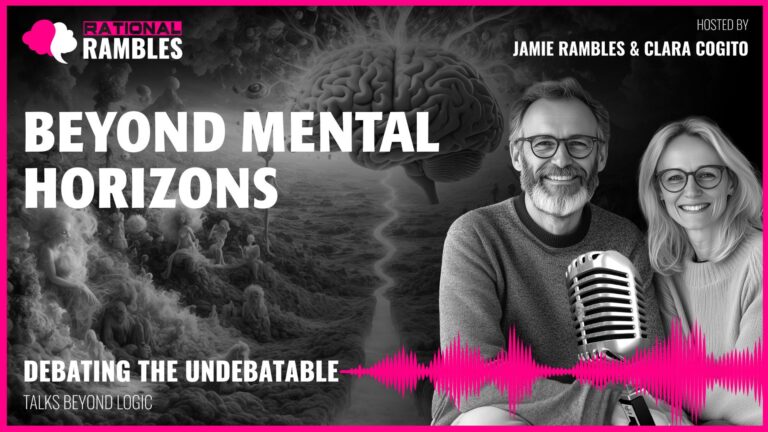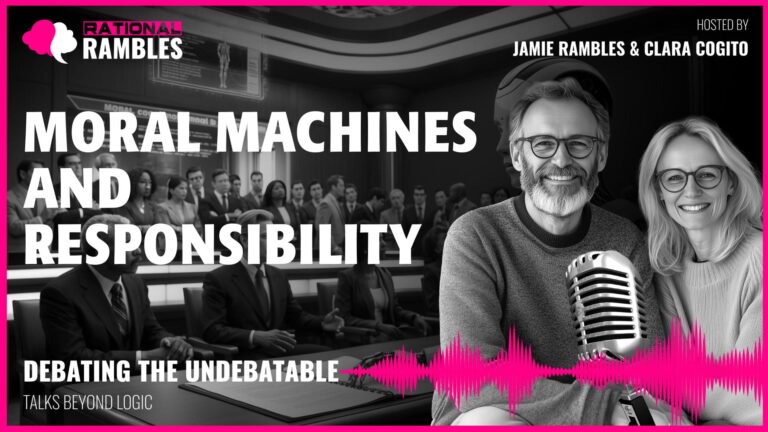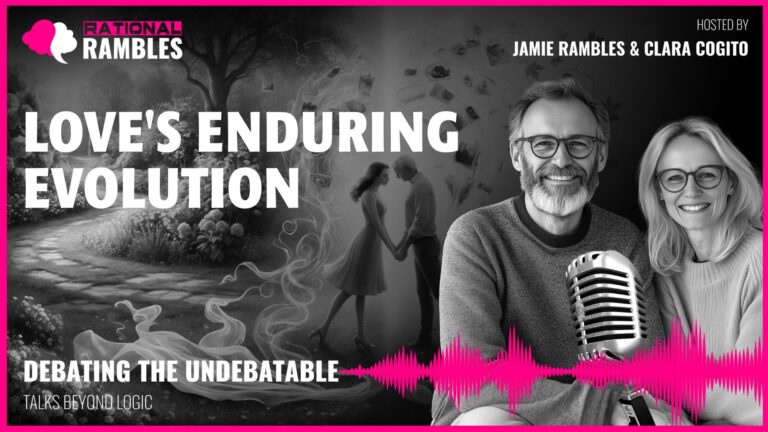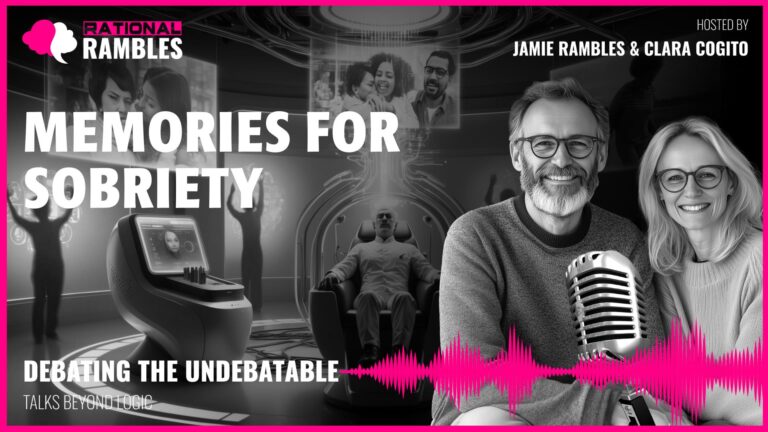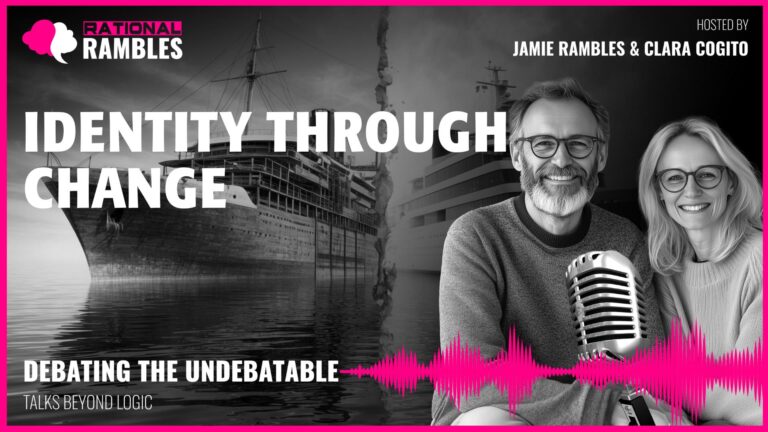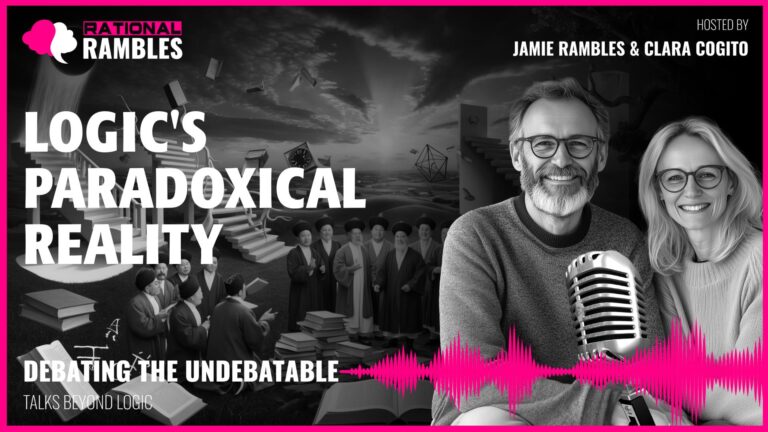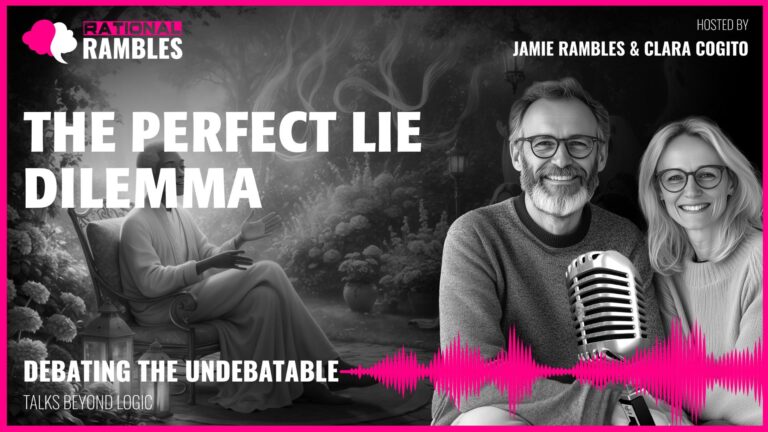Cultural Translation or Erasure: The Philosophical Implications of Cross-Cultural Communication Technology
Introduction
In an increasingly globalized world, the barriers of language and cultural understanding continue to present significant challenges to human connection. Technological solutions have emerged to address these obstacles, with translation tools becoming more sophisticated each year. But now we stand at the precipice of a new frontier: technologies that claim to translate not just words but emotional and cultural contexts as well. This development raises profound philosophical questions about the nature of cultural identity, human connection, and the role of technology in mediating our understanding of one another.
As we contemplate technologies that promise to bridge vast cultural differences through algorithms, we must confront essential questions: Does the algorithmic translation of cultural nuance represent a step toward greater human understanding, or does it risk flattening the rich tapestry of cultural diversity? Can the ineffable qualities of cultural and emotional expression truly be captured by computational frameworks? And what might be lost or gained when we outsource cultural interpretation to artificial intelligence?
This article explores the philosophical, psychological, and ethical dimensions of cross-cultural translation technologies. By examining the nature of cultural emotions, embodied experience, and the process of understanding across difference, we will investigate whether such technologies represent a pathway to greater human connection or a concerning step toward cultural homogenization.
The Nature of Cultural Emotions
At the heart of cross-cultural translation technologies lies an ambitious assumption: that emotions and their expressions can be universalized, standardized, and converted between cultural frameworks. This assumption deserves careful scrutiny through both philosophical and psychological lenses.
Beyond Universal Emotions
While early psychological research by Paul Ekman suggested the existence of six universal emotional expressions recognizable across cultures, contemporary cross-cultural psychology has revealed a far more complex picture. Emotions are not simply universal constants expressed differently across cultures; their very nature, experience, and conceptualization can vary significantly between cultural contexts.
Consider the Japanese concept of “amae,” which describes a pleasant feeling of dependence upon another person. This emotional experience has no direct equivalent in Western emotional frameworks, where independence is often more highly valued than interdependence. Similarly, the Finnish concept of “sisu,” which denotes a cultural form of determination and resilience, differs substantively from American notions of “grit” or “perseverance.” These emotions are not merely differently labeled experiences but are qualitatively distinct states embedded within specific cultural worldviews.
Philosopher Ludwig Wittgenstein’s work on language games provides valuable insight here. Wittgenstein argued that meaning emerges through use within particular contexts and forms of life. According to this view, emotional concepts gain their significance not through reference to universal internal states but through their embeddedness in specific cultural practices and ways of being. If Wittgenstein is correct, the very premise of translation between emotional frameworks may fundamentally misunderstand how emotional meaning works.
Emotional Granularity and Cultural Specificity
Psychologists studying emotional granularity—the degree to which people make fine-grained distinctions between similar emotional states—have found significant cross-cultural variation. Some cultures possess highly specific emotional concepts that allow them to distinguish between subtle variations of feeling states that other cultures might lump together under broader categories.
For instance, Portuguese “saudade” (a deep longing for something absent), German “waldeinsamkeit” (the feeling of being alone in the woods), or Danish “hygge” (a quality of coziness and comfortable conviviality) represent culturally specific emotional concepts that resist simple translation. When these nuanced emotional concepts are translated into broader categories, crucial information is lost, raising questions about whether cross-cultural emotional translation can ever be truly faithful to the original experience.
This philosophical problem resembles the ancient Ship of Theseus paradox: at what point does a translation become something entirely different from the original? If a cultural-emotional translation app converts “amae” into “affectionate dependence” in English, is it actually conveying the original feeling, or creating something new that merely approximates it? The translation inevitably transforms the emotional concept, potentially stripping it of its cultural embeddedness and specificity.
Embodied Experience and Cultural Understanding
The challenge of cross-cultural emotional translation is further complicated by the embodied nature of emotional experience. Emotions are not merely abstract mental states; they are physically experienced phenomena that manifest differently across cultural contexts.
The Body as Cultural Text
Philosopher Maurice Merleau-Ponty emphasized that we don’t simply have bodies; we are our bodies, and our understanding is inherently embodied. Contemporary research in affective neuroscience and embodied cognition supports this philosophical insight, demonstrating that emotions involve complex patterns of physiological arousal, bodily sensations, and physical expressions that vary across cultural contexts.
Cross-cultural studies of emotional expression reveal that even bodily manifestations of emotions—supposedly the most “biological” and “universal” aspects—display cultural variation. For instance, the physical experience and expression of shame looks markedly different in Japan than in the United States. While Western expressions might involve downcast eyes and slumped posture, Japanese expressions often include smiling or laughter despite the internal experience of shame.
These embodied dimensions of emotion pose a significant challenge for technological translation. How can an algorithm capture and convey the visceral, physical dimension of emotional experience across cultural contexts? The embodied nature of emotion suggests that there may be fundamental limits to what can be translated through digital interfaces that lack bodies entirely.
The Limits of Algorithmic Understanding
Philosopher Thomas Nagel’s famous paper “What Is It Like to Be a Bat?” argues that subjective experience isn’t reducible to information. No matter how much information we gather about bat physiology, we cannot know what it is like to experience the world through echolocation. Similarly, we might question whether cultural-emotional experience can ever truly be captured by an algorithm, no matter how sophisticated.
This suggests a potential technological hubris in the very concept of algorithmic cultural translation—the belief that with enough data and processing power, we can reduce something as ineffable as cross-cultural emotional understanding to computational formulas. Some aspects of cultural understanding may depend fundamentally on having a human body situated within a specific cultural context, something no algorithm can achieve.
The Finnish concept of “sisu” isn’t just mentally understood; it’s physically felt in a way that differs from American “grit.” The Japanese experience of “amae” involves bodily states and subtle physical interactions that may be impossible to fully translate into another cultural-physical framework. These embodied dimensions suggest inherent limitations to technological approaches to cultural translation.
The Ethics of Cultural Translation Technologies
Beyond questions of possibility lie equally important questions of desirability. What are the ethical implications of technologies that aim to translate cultural and emotional contexts? Several critical ethical dimensions deserve examination.
Cultural Imperialism and Technological Mediation
There is an inherently political dimension to cross-cultural translation, particularly in a world with uneven power dynamics between cultures. Which cultural frameworks become the default “source” and which become the “target” of translation is not a neutral choice but one that often reflects global power structures.
Historical precedent gives us reason for caution. Western philosophical and psychological frameworks have frequently been presented as universal when they actually represent culturally specific worldviews. From Enlightenment rationality to Freudian psychoanalysis, Western intellectual traditions have often universalized particular cultural perspectives, misrepresenting or marginalizing non-Western ways of being and knowing.
A translation app that presents itself as neutrally conveying emotional meaning across cultures might inadvertently reinforce these dynamics. If the training data and underlying assumptions of the algorithm privilege certain cultural expressions over others, the technology could become a vector for a new form of cultural imperialism—one that operates under the guise of facilitating mutual understanding.
Furthermore, the very premise that users need not learn the nuances of another culture because “an algorithm will approximate it for you” potentially encourages a kind of cultural laziness. It could foster the attitude that deep cultural learning is unnecessary, that push-button understanding is sufficient. This attitude risks reducing rich cultural traditions to easily consumable, algorithmically processed approximations.
Authenticity and Communicative Agency
The concept of authenticity in communication takes on new complexity when algorithms substantially transform our expressions. If I communicate through an app that significantly alters my emotional expression to fit another cultural framework, am I still authentically present in that communication? Or am I presenting a technologically mediated version of myself that neither I nor my conversation partner fully recognizes?
Philosophers like Jean-Paul Sartre and Martin Heidegger raised profound questions about authenticity in human existence. For Sartre, authenticity involved recognizing and taking responsibility for one’s freedom; for Heidegger, it meant resisting the inauthentic modes of being that technology and modernity often impose upon us. Both perspectives suggest reasons for caution about outsourcing cultural expression to algorithms.
This connects to questions of agency and consent in communication. If I don’t know exactly how my words are being transformed in cross-cultural translation, am I fully consenting to the communication happening in my name? There’s a potential loss of communicative autonomy when an algorithm substantially modifies my expression without my full understanding or control.
Yet we might also consider that we already adjust our self-presentation constantly depending on context—what sociologist Erving Goffman called “impression management.” In a sense, humans are already their own cultural-emotional translators, modifying their expression based on audience and setting. Perhaps the app is simply making explicit what humans already do implicitly.
Learning Through Difference: The Value of Productive Misunderstanding
A crucial yet often overlooked aspect of cross-cultural communication is the productive role that misunderstandings can play in deepening intercultural understanding. This insight raises important questions about what might be lost if technology attempts to eliminate all friction from cross-cultural exchange.
The Dialectics of Intercultural Understanding
Philosopher G.W.F. Hegel’s dialectical thinking offers a valuable lens for understanding how deeper comprehension often emerges through the productive resolution of misunderstandings. In Hegel’s dialectical model, understanding progresses not through the smooth accumulation of information but through the confrontation and resolution of contradictions.
Applied to cross-cultural communication, this suggests that misunderstandings are not merely obstacles to be eliminated but potentially valuable moments in the development of genuine understanding. When we miscommunicate across cultures and then work together to resolve that misunderstanding, we often build deeper connections through the very process of negotiating difference.
If an app creates a frictionless communication environment by preemptively eliminating potential cultural misunderstandings, it might paradoxically prevent the very productive tensions that lead to deeper cultural understanding. The struggles and occasional confusions of cross-cultural communication might not be bugs but features—essential aspects of the learning process rather than obstacles to be eliminated.
Developmental Perspectives on Cultural Learning
Developmental psychology offers complementary insights through research on how children learn. Psychologist Lev Vygotsky’s concept of the “zone of proximal development” suggests that optimal learning occurs when learners struggle with challenges just beyond their current capabilities, with appropriate scaffolding. Similarly, developmental research shows that productive struggle is essential for deep learning; children develop not by having problems solved for them but by working through challenges with appropriate support.
Applied to cross-cultural understanding, this suggests that the effort and occasional confusion involved in navigating cultural differences might be essential to the process of developing cultural intelligence. A technology that aims to eliminate all such struggle might inadvertently short-circuit the developmental processes through which humans build genuine cross-cultural understanding.
Research in conflict resolution psychology further supports this perspective. Techniques like “looping,” where parties reflect back what they heard to confirm understanding, create space for clarification and deeper connection precisely by making communication challenges explicit rather than trying to eliminate them. The process of checking understanding, clarifying intentions, and repairing misunderstandings often leads to deeper connection than smooth but superficial communication.
Cultural Dynamics and Technological Limitations
Even if we set aside philosophical concerns about the possibility and desirability of algorithmic cultural translation, practical limitations remain regarding how such technologies would handle the dynamic nature of cultural expression.
Temporal Evolution of Cultural Expression
Cultures are not static entities but constantly evolving systems. Emotional expressions, conversational norms, and social meanings change over time, often rapidly. Young Japanese people express emotions differently than their grandparents did; contemporary American expressions of pride differ from those of previous generations. This temporal dimension of culture poses significant challenges for algorithmic approaches to cultural translation.
Consider how quickly digital emotional expression has evolved just in the last decade. The meaning and use of emoji, the development of complex emotional concepts like “cringe,” and the constant evolution of slang terms for emotional states all demonstrate the rapid pace of change in cultural-emotional expression. An algorithm would constantly be playing catch-up to these evolving meanings, potentially embedding outdated understandings of cultural expression even as they transform.
This temporal limitation is particularly significant given the tendency of algorithms to ossify the phenomena they model. Once encoded into software, understandings of cultural norms can become frozen, reinforcing possibly outdated conceptions of how emotions are expressed in particular cultures even as those cultures continue to evolve.
Individual Variation Within Cultures
Beyond temporal change, cultures also contain tremendous internal diversity. Not all British people express embarrassment in the same way, just as not all Americans express pride identically. Psychological research increasingly recognizes that there is often more variation within cultures than between them, calling into question the very concept of monolithic cultural norms around emotional expression.
An app based on cultural averages or stereotypical patterns could miss this rich diversity of individual expression, potentially reinforcing stereotypes by assuming greater cultural homogeneity than actually exists. It might inadvertently promote essentialist views of culture that contemporary anthropology and cross-cultural psychology have largely rejected in favor of more dynamic, heterogeneous understandings of cultural identity.
These limitations suggest that even if algorithmic cultural translation were philosophically possible and ethically desirable (both questionable assumptions), significant practical hurdles would remain in creating technology that could adequately capture the dynamic and diverse nature of cultural emotional expression.
Reimagining Cultural Translation Technologies
Given the philosophical, ethical, and practical challenges identified, how might we reconceptualize the potential role of technology in cross-cultural communication? Rather than pursuing the problematic goal of seamless, invisible translation that risks cultural erasure, alternative approaches might better serve the goal of enhanced cross-cultural understanding.
Transparency and Educational Design
One promising alternative is radical transparency in design. Rather than hiding cultural translation behind a black-box algorithm, technology could make the process of cultural mediation visible and educational. Imagine an app that shows both the original message and its culturally adapted version to all parties, along with explanations of the cultural reasons for any significant transformations.
For example, instead of silently transforming a direct American criticism into a more indirect Japanese form, the app could show both versions along with contextual information: “In Japanese business culture, direct criticism can be perceived as disrespectful. Here’s how your message has been adapted to align with Japanese communication norms, and here’s why this matters in Japanese professional contexts.”
This transparency would transform the app from a mere translation tool into a learning device that facilitates metacognition—thinking about how we think and communicate across cultural differences. It would make visible the usually invisible processes of cultural translation, potentially enhancing users’ own cultural intelligence rather than replacing it.
Dialogic Approaches to Cultural Mediation
Building on this transparency, technology could facilitate meta-conversations about cultural differences rather than attempting to eliminate them. Imagine if after receiving a translated message, users could ask, “I notice my words were substantially changed in translation—can we talk about why?” This meta-dialogue might be where the deepest cultural understanding actually happens.
Philosopher Hans-Georg Gadamer’s concept of the “fusion of horizons” is instructive here. For Gadamer, understanding across difference doesn’t erase those differences but creates a new perspective that incorporates aspects of both viewpoints. Technology could facilitate this fusion not by eliminating difference but by creating spaces for productive dialogue about those differences.
Such an approach aligns with research on cultural intelligence, which emphasizes that awareness of cultural differences, coupled with the motivation to learn about them, is crucial for developing genuine cross-cultural understanding. Technology designed to highlight rather than hide cultural differences could support this developmental process rather than short-circuiting it.
Scaffolding Rather Than Replacement
This reconceptualization positions technology not as a replacement for cultural learning but as a scaffold for it—a tool that makes visible the usually invisible processes of cultural translation and supports users in developing their own cross-cultural understanding.
Psychologist Lev Vygotsky’s concept of scaffolding in learning provides a useful model: scaffolding offers temporary support that enables growth but can eventually be removed as the learner develops independence. Ideally, cultural translation technology would help people build their own cultural intelligence rather than creating permanent dependency on algorithmic mediation.
Over time, users would ideally become less reliant on technological mediation as they internalize insights about cultural differences in emotional expression and communication norms. The technology would serve as a bridge to direct cross-cultural understanding rather than a permanent substitute for it.
Conclusion: Beyond Translation Toward Dialogue
The philosophical examination of cross-cultural translation technologies reveals that the question “Will this lead to greater understanding or cultural erasure?” depends entirely on how such technology is designed and implemented. If designed to make cultural difference invisible, it could indeed lead to homogenization and flattening of cultural diversity. But if designed to illuminate and educate about those differences, it could potentially enhance understanding while preserving cultural uniqueness.
Technology is never neutral; it always embodies certain values and assumptions. The design choices made in creating cultural translation tools inevitably reflect philosophical positions on the nature of culture, emotion, and understanding across difference. By making these philosophical assumptions explicit, we can design technologies that align with our highest values around cultural diversity and human connection.
Perhaps the ultimate goal shouldn’t be technological perfection in translation but rather creating technologies that facilitate thoughtful, curious exchange across cultural differences—where differences become opportunities for learning rather than obstacles to overcome. At its best, technology should enhance human connection rather than replace it, serving not as a substitute for the rich, sometimes messy work of cross-cultural understanding, but as a thoughtful companion in that essential human project.
As we stand at this technological frontier, the path we choose will reflect our deepest values regarding cultural diversity. Will we pursue the illusion of frictionless communication at the cost of cultural uniqueness? Or will we develop technologies that honor the beautiful complexities that make each culture distinct while facilitating genuine dialogue across difference? The philosophical considerations explored in this article suggest that the latter path, though perhaps more challenging, ultimately better serves our shared human project of understanding across difference.
References
Barrett, L. F. (2017). How emotions are made: The secret life of the brain. Houghton Mifflin Harcourt.
Ekman, P. (1999). Basic emotions. In T. Dalgleish & M. Power (Eds.), Handbook of cognition and emotion (pp. 45-60). John Wiley & Sons.
Gadamer, H. G. (2004). Truth and method (2nd ed.). Continuum.
Goffman, E. (1959). The presentation of self in everyday life. Anchor Books.
Heidegger, M. (1977). The question concerning technology, and other essays. Harper & Row.
Merleau-Ponty, M. (2012). Phenomenology of perception. Routledge.
Nagel, T. (1974). What is it like to be a bat? The Philosophical Review, 83(4), 435-450.
Nussbaum, M. C. (2001). Upheavals of thought: The intelligence of emotions. Cambridge University Press.
Vygotsky, L. S. (1978). Mind in society: The development of higher psychological processes. Harvard University Press.
Wittgenstein, L. (1953). Philosophical investigations. Blackwell Publishing.


